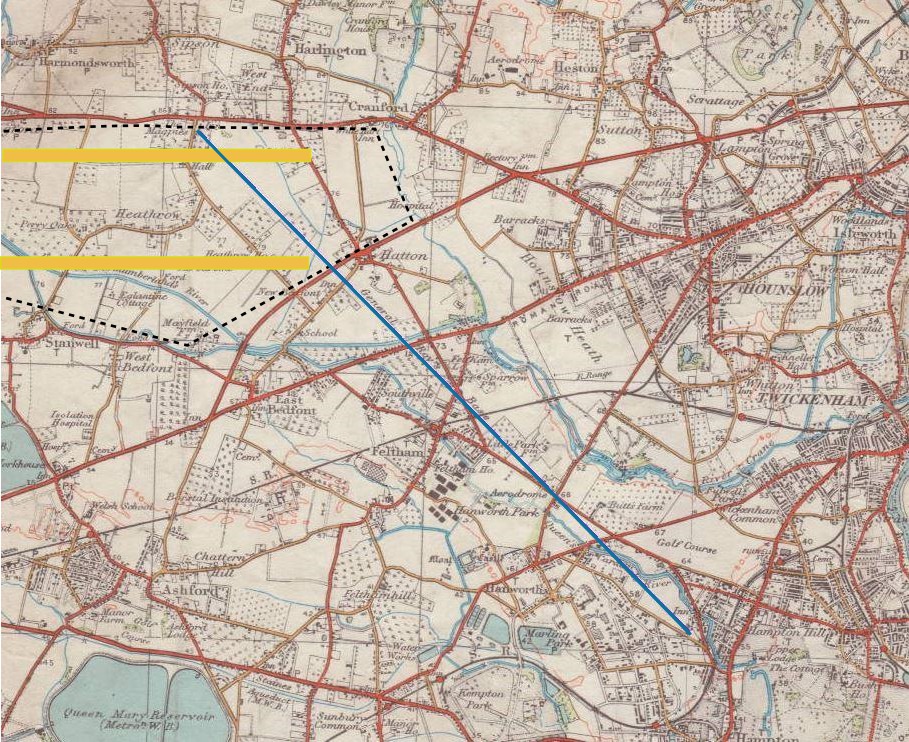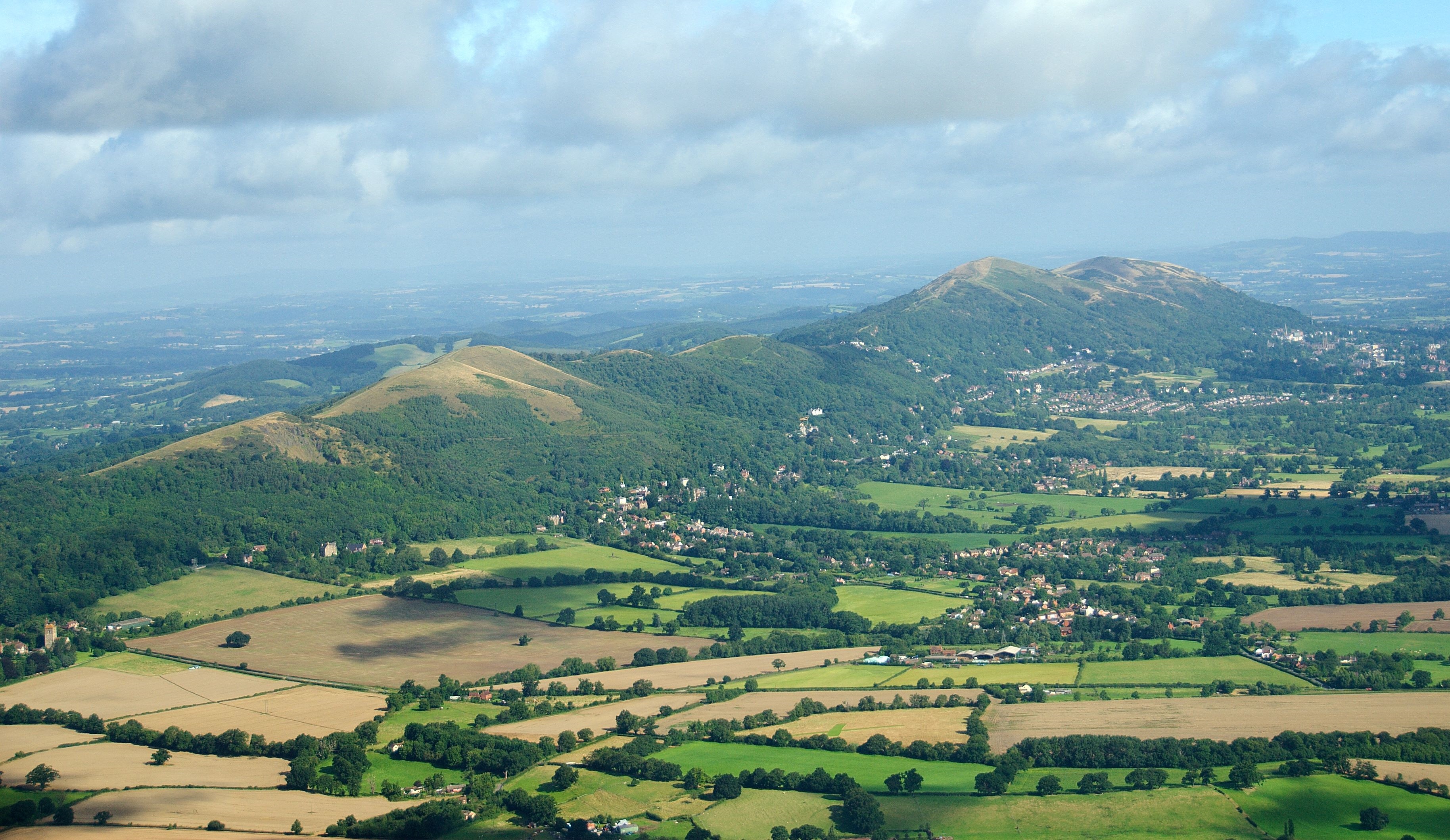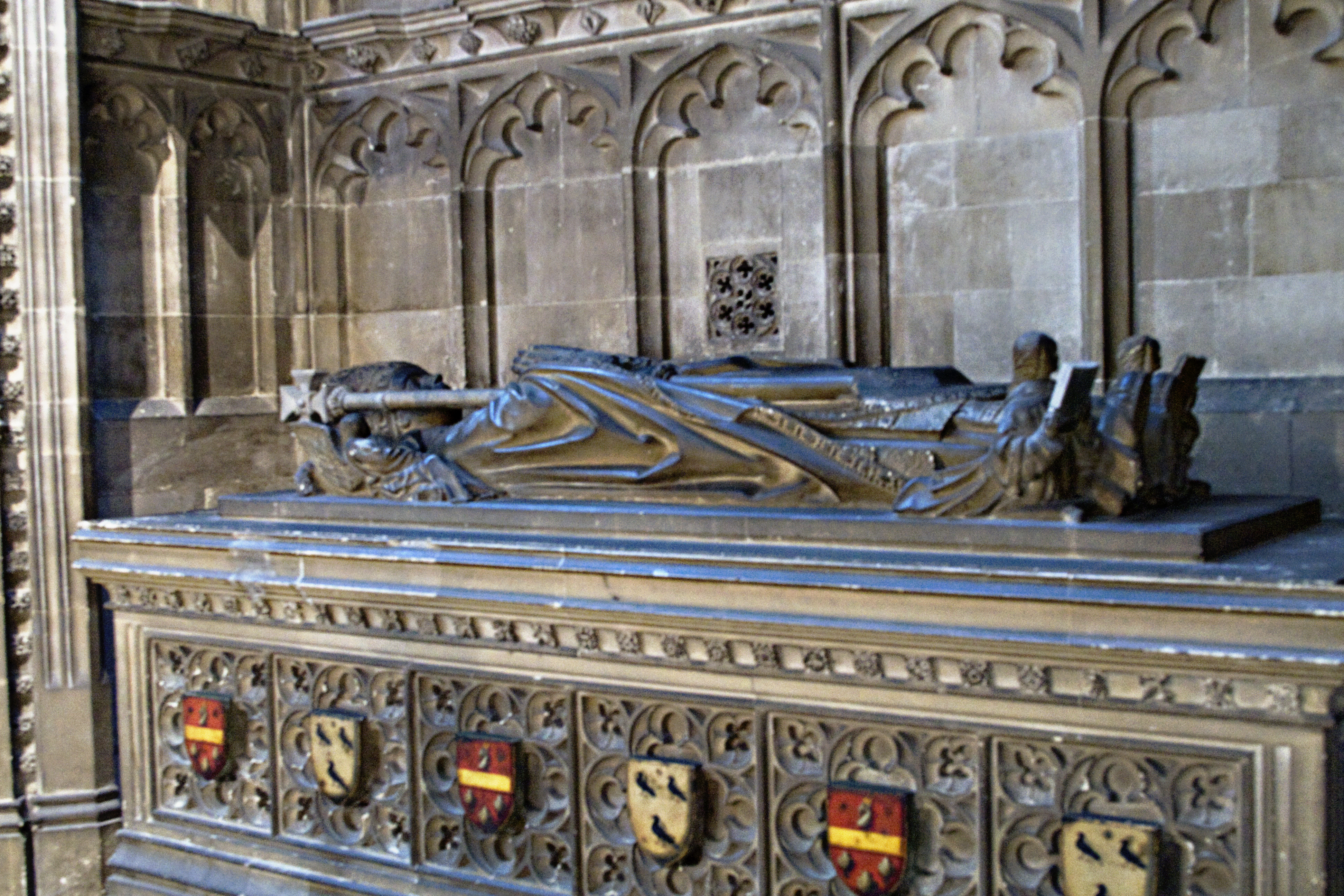|
Aldington, Kent
Aldington is a village and civil parish in the Ashford District of Kent, England. The village centre is eight miles (12 km) south-east of the town of Ashford. As with the village centre, set on a steep escarpment above agricultural Romney Marsh and the upper Stour is Aldington Knoll, which was used as a Roman burial barrow and later beacon, it has a panorama towards the English Channel and of low land such as Dungeness. At the 2011 Census the population included Bonnington. Geography The parish is bounded to the north by the M20 motorway and the straight rail links that include High Speed 1. To the south, it drops to the Romney Marsh (about 10% of the parish lies there) to the north bank of the Royal Military Canal. It covers 3,400 acres (1376ha) and has a population of 981. The parish, part of the North Downs, is considered an Area of Outstanding Natural Beauty, and a large area is also part of the Old Romney Shoreline Special Landscape Area. The main road acro ... [...More Info...] [...Related Items...] OR: [Wikipedia] [Google] [Baidu] |
United Kingdom Census 2011
A Census in the United Kingdom, census of the population of the United Kingdom is taken every ten years. The 2011 census was held in all countries of the UK on 27 March 2011. It was the first UK census which could be completed online via the Internet. The Office for National Statistics (ONS) is responsible for the census in England and Wales, the General Register Office for Scotland (GROS) is responsible for the census in Scotland, and the Northern Ireland Statistics and Research Agency (NISRA) is responsible for the census in Northern Ireland. The Office for National Statistics is the executive office of the UK Statistics Authority, a non-ministerial department formed in 2008 and which reports directly to Parliament. ONS is the UK Government's single largest statistical producer of independent statistics on the UK's economy and society, used to assist the planning and allocation of resources, policy-making and decision-making. ONS designs, manages and runs the census in England an ... [...More Info...] [...Related Items...] OR: [Wikipedia] [Google] [Baidu] |
Royal Military Canal
The Royal Military Canal is a canal running for between Seabrook near Folkestone and Cliff End near Hastings, following the old cliff line bordering Romney Marsh, which was constructed as a defence against the possible invasion of England during the Napoleonic Wars. History Origin and construction The canal was conceived by Lieutenant-Colonel John Brown of the Royal Staff Corps of field engineers in 1804, during anti-invasion preparations, as a defensible barrier to ensure that a French force could not use the Romney Marsh as a bridgehead. It had previously been assumed that the marsh could be inundated in the event of an invasion, but Brown argued that this would take ten days to implement and would cause massive disruption in the event of a false alarm. At a meeting on 26 September 1804, the Prime Minister, William Pitt the Younger, and the Commander-in-Chief of the Forces, the Duke of York, both enthusiastically endorsed the scheme. John Rennie was appointed consultan ... [...More Info...] [...Related Items...] OR: [Wikipedia] [Google] [Baidu] |
Anglo-French Survey (1784–1790)
The Anglo-French Survey (1784–1790) was the geodetic survey to measure the relative position of Royal Greenwich Observatory, Greenwich Observatory and the Paris Observatory via triangulation (surveying), triangulation. The English operations, executed by William Roy, consisted of the measurements of bases at Hounslow Heath (1784) and Romney Marsh (1787), the measurements of the angles of the triangles (1787–1788) and finally the calculation of all the triangles (1788–1790). The survey is very significant as the first precise survey within Britain, and the forerunner of the work of the Ordnance Survey which was founded in 1791, one year after Roy's death. Cassini's memoir Late in life, when he was 57, Roy was granted the opportunity to establish his lasting reputation in the world of geodesy. The opening came from a completely unexpected direction. In 1783 César-François Cassini de Thury, Cassini de Thury addressed a memoir Concerning the Latitude and Longitude of Gr ... [...More Info...] [...Related Items...] OR: [Wikipedia] [Google] [Baidu] |
Smugglers
Smuggling is the illegal transportation of objects, substances, information or people, such as out of a house or buildings, into a prison, or across an international border, in violation of applicable laws or other regulations. There are various motivations to smuggle. These include the participation in illegal trade, such as in the drug trade, illegal weapons trade, prostitution, human trafficking, kidnapping, exotic wildlife trade, art theft, heists, chop shops, illegal immigration or illegal emigration, tax evasion, import/export restrictions, providing contraband to prison inmates, or the theft of the items being smuggled. Smuggling is a common theme in literature, from Bizet's opera ''Carmen'' to the James Bond spy books (and later films) '' Diamonds Are Forever'' and '' Goldfinger''. Etymology The verb ''smuggle'', from Low German ''smuggeln'' or Dutch ''smokkelen'' (="to transport (goods) illegally"), apparently a frequentative formation of a word meaning "to sneak", ... [...More Info...] [...Related Items...] OR: [Wikipedia] [Google] [Baidu] |
The Aldington Gang
Aldington was the stronghold of The Aldington Gang, a band of smugglers roaming the Romney Marshes and shores of Kent. The gang's leaders, made the local inn, ''The Walnut Tree Inn'', their headquarters and drop for their contraband. The Inn was often used when they waited for others of their group to bring in goods from across the Marshes. High up on the southern side of the inn is a small window through which the gang would shine a signal light to their partners up on ''Aldington Knoll'' when the way was clear for them. They were probably the last 'major' gang that existed in Kent and it is believed that they were known as ''The Blues'' from the colour of the clothing that they wore or from blue flares used for signalling. The Gang's activities The gang was probably founded in or around 1817, as gang-based smuggling returned, but the first mention of the Aldington Gang was in November 1820, after the men had returned home from the Napoleonic Wars and found little to do to make a ... [...More Info...] [...Related Items...] OR: [Wikipedia] [Google] [Baidu] |
Napoleonic Wars
The Napoleonic Wars (1803–1815) were a series of major global conflicts pitting the French Empire and its allies, led by Napoleon I, against a fluctuating array of European states formed into various coalitions. It produced a period of French domination over most of continental Europe. The wars stemmed from the unresolved disputes associated with the French Revolution and the French Revolutionary Wars consisting of the War of the First Coalition (1792–1797) and the War of the Second Coalition (1798–1802). The Napoleonic Wars are often described as five conflicts, each termed after the coalition that fought Napoleon: the Third Coalition (1803–1806), the Fourth (1806–1807), the Fifth (1809), the Sixth (1813–1814), and the Seventh (1815) plus the Peninsular War (1807–1814) and the French invasion of Russia (1812). Napoleon, upon ascending to First Consul of France in 1799, had inherited a republic in chaos; he subsequently created a state with stable financ ... [...More Info...] [...Related Items...] OR: [Wikipedia] [Google] [Baidu] |
Henry VIII Of England
Henry VIII (28 June 149128 January 1547) was King of England from 22 April 1509 until his death in 1547. Henry is best known for his six marriages, and for his efforts to have his first marriage (to Catherine of Aragon) annulled. His disagreement with Pope Clement VII about such an annulment led Henry to initiate the English Reformation, separating the Church of England from papal authority. He appointed himself Supreme Head of the Church of England and dissolved convents and monasteries, for which he was excommunicated by the pope. Henry is also known as "the father of the Royal Navy" as he invested heavily in the navy and increased its size from a few to more than 50 ships, and established the Navy Board. Domestically, Henry is known for his radical changes to the English Constitution, ushering in the theory of the divine right of kings in opposition to papal supremacy. He also greatly expanded royal power during his reign. He frequently used charges of treason and ... [...More Info...] [...Related Items...] OR: [Wikipedia] [Google] [Baidu] |
Chase (land)
''Chase'' is a term used in the United Kingdom to define a type of land reserved for hunting use by its owner. Similarly, a ''Royal Chase'' is a type of Crown Estate by the same description, where the hunting rights are reserved for a member of the British Royal Family. The term ‘chase’ is also used in Australia to describe some national parks. Flinders Chase National Park is on Kangaroo Island in South Australia and Ku-ring-gai Chase National Park is in New South Wales. Rights and history The ''Victoria County History'' describes a chase as: "like a forest, uninclosed, and only defined by metes ouses and farmsteads withinand bounds ills, highways, watercourses etc but it could be held by a subject. Offences committed therein were, as a rule, punishable by the common law and not by forest jurisdiction." Chases are often identified by open clearings, soil type, and retaining additional heath rather than forests for hunting purposes. Chases faced mass enclosure by Pr ... [...More Info...] [...Related Items...] OR: [Wikipedia] [Google] [Baidu] |
William Warham
William Warham ( – 22 August 1532) was the Archbishop of Canterbury from 1503 to his death. Early life and education Warham was the son of Robert Warham of Malshanger in Hampshire. He was educated at Winchester College and New College, Oxford. Legal career After graduating, Warham practised and taught law both in London and Oxford. His father was a tenant farmer, but his brother, Sir Hugh Warham, acquired an estate at Croydon, which passed to his daughter Agnes, who married Sir Anthony St Leger. Bishopric Later, Warham took holy orders, held two livings (Barley and Cottenham) and became Master of the Rolls in 1494. Henry VII found him a useful and clever diplomatist. He helped to arrange the marriage between Henry's son, Arthur, Prince of Wales, and Catherine of Aragon. He went to Scotland with Richard Foxe, then bishop of Durham, in 1497. He was partly responsible for several commercial and other treaties with Maximilian I, Holy Roman Emperor, also Count of Flanders and Re ... [...More Info...] [...Related Items...] OR: [Wikipedia] [Google] [Baidu] |
John Morton (cardinal)
John Morton ( – 15 September 1500) was an English cleric, civil lawyer and administrator during the period of the Wars of the Roses. He entered royal service under Henry VI and was a trusted councillor under Edward IV and Henry VII. Edward IV made him Bishop of Ely and under Henry VII he became Lord Chancellor, Archbishop of Canterbury and a cardinal. Early life Morton was born in around 1420 either in Milborne St Andrew or Bere Regis in Dorset. He came from the minor gentry of the time: his father was Richard Morton of Milborne St Andrew and his uncle, William Morton of Cerne, represented Shaftesbury in Parliament in 1437. Morton was educated at the University of Oxford, becoming a Bachelor of Civil Law in 1448, a Bachelor of Civil and Canon Law in 1451 and a Doctor of Civil Law in 1452. He practised as a proctor in the chancellor’s court at Oxford from 1448 and in 1451 he was acting as a commissary or deputy and official of the chancellor of the university. In 1452 ... [...More Info...] [...Related Items...] OR: [Wikipedia] [Google] [Baidu] |
Archbishop Of Canterbury
The archbishop of Canterbury is the senior bishop and a principal leader of the Church of England, the ceremonial head of the worldwide Anglican Communion and the diocesan bishop of the Diocese of Canterbury. The current archbishop is Justin Welby, who was enthroned at Canterbury Cathedral on 21 March 2013. Welby is the 105th in a line which goes back more than 1400 years to Augustine of Canterbury, the "Apostle to the English", sent from Rome in the year 597. Welby succeeded Rowan Williams. From the time of Augustine until the 16th century, the archbishops of Canterbury were in full communion with the See of Rome and usually received the pallium from the pope. During the English Reformation, the Church of England broke away from the authority of the pope. Thomas Cranmer became the first holder of the office following the English Reformation in 1533, while Reginald Pole was the last Roman Catholic in the position, serving from 1556 to 1558 during the Counter-Reformation. ... [...More Info...] [...Related Items...] OR: [Wikipedia] [Google] [Baidu] |
Perpendicular (architecture)
Perpendicular Gothic (also Perpendicular, Rectilinear, or Third Pointed) architecture was the third and final style of English Gothic architecture developed in the Kingdom of England during the Late Middle Ages, typified by large windows, four-centred arches, straight vertical and horizontal lines in the tracery, and regular arch-topped rectangular panelling. Perpendicular was the prevailing style of Late Gothic architecture in England from the 14th century to the 17th century. Perpendicular was unique to the country: no equivalent arose in Continental Europe or elsewhere in the British Isles. Of all the Gothic architectural styles, Perpendicular was the first to experience a second wave of popularity from the 18th century on in Gothic Revival architecture. The pointed arches used in Perpendicular were often four-centred arches, allowing them to be rather wider and flatter than in other Gothic styles. Perpendicular tracery is characterized by mullions that rise vertically as f ... [...More Info...] [...Related Items...] OR: [Wikipedia] [Google] [Baidu] |






